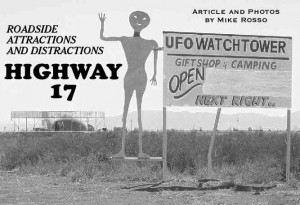Letter from Mark Weston
Conservation Easements – October 2002 – Colorado Central Magazine
Editors:
Dave Skinner’s essay in the June 2002 Colorado Central Magazine contained a few incorrect statements that seem to have been presented as facts. These statements beg correction because they serve as a foundation for some of the opinions that he expresses. To wit:
1. “The [land conservancy] agent offers 30 percent on what a developer will pay.” Truth be told, no developer operating with all her faculties intact would offer a nickel for a conservation easement. Most conservation easements are gifted outright by landowners so inclined, some are purchased by land trusts or governments at their full market value, and some are conveyed for a combination of cash, federal income tax deduction and (in Colorado) a refundable and/or transferable state income tax rebate. So, in fact, land conservancy agents offer landowners many multiples of what a developer would pay, if you compare apples to apples.
2. No part of the 20,000+ acre Greenland Ranch has been or is intended to be “transferred to the state.” The previous owner of the Ranch, Sun Resources, sold conservation easements to The Conservation Fund, and then immediately sold its remaining interest in the ranch to a private buyer, Harmony Land & Cattle (about 17,600 acres) and to Douglas County, Colorado (about 3,600 acres). The seller, Sun Resources, got full market value, in cash, for the ranch.
Harmony operates its part of the ranch (everything east of I-25) as part of its multi-state cattle operation. Douglas County owns the balance of the ranch (everything west of I-25, except several acres containing the buildings). Douglas County has a sales-tax funded open space program that was enacted by its voters in 1994, and uses its part of Greenland for public recreation, trail purposes, wildlife habitat and just plain open space (what the voters intended).
The Conservation Fund paid for the conservation easements with cash it raised from private and charitable foundation donations, as well as the Great Outdoors Colorado Trust Fund, the entity charged constitutionally with distributing a big chunk of Colorado’s lottery proceeds. Douglas County, courtesy of shoppers at Park Meadows Mall and other retail outlets, kicked in about $10 million to the deal.
That’s it for the factual corrections. But I also take issue with one of Skinner’s opinions.
He states: “Land trusts, like all other buyers and sellers, should always pay full present value to farmers or ranchers for their land — in short, buy it outright.” Those are fighting words to a lot of farmers and ranchers who don’t want to sell their land, whether to a land trust, government, real estate developer, or even another agricultural producer.
There are, though, a large and growing number of farmers and ranchers who see conservation easements (sold, donated or a combination thereof) as one of several useful planning techniques. Conservation easements can help a producer retain ownership of land and can generate cash as well as other indirect financial benefits. As many of these producers own and manage multi-million dollar enterprises, don’t you think they are sophisticated enough to determine whether or not any purchase offer makes sense, in light of their business plans? In any event, I am fairly sure they don’t want to be required to sell their land when all they really want to do is convey an easement and keep on ranching.
My knowledge about the Greenland Ranch and other conservation easement deals comes from a couple of experiential places. I am a real estate consultant and appraiser with substantial professional experience in this field. Also, I’ve served (and continue to serve) as a member of the Douglas County, Colorado, Open Space Advisory Committee.
Mark Weston
Castle Rock
EDITOR’S NOTE: We apologize for the delay in publishing this letter. The author sent it in a timely manner, but addressed it to Dave Skinner, so we forwarded it without reading the text, which is our usual policy. Once we realized that the writer intended the letter for publication, however, we were glad to comply. To avoid such delays in the future, we suggest that letter writers address correspondence they wish to have published to Colorado Central Magazine or to its editors.

